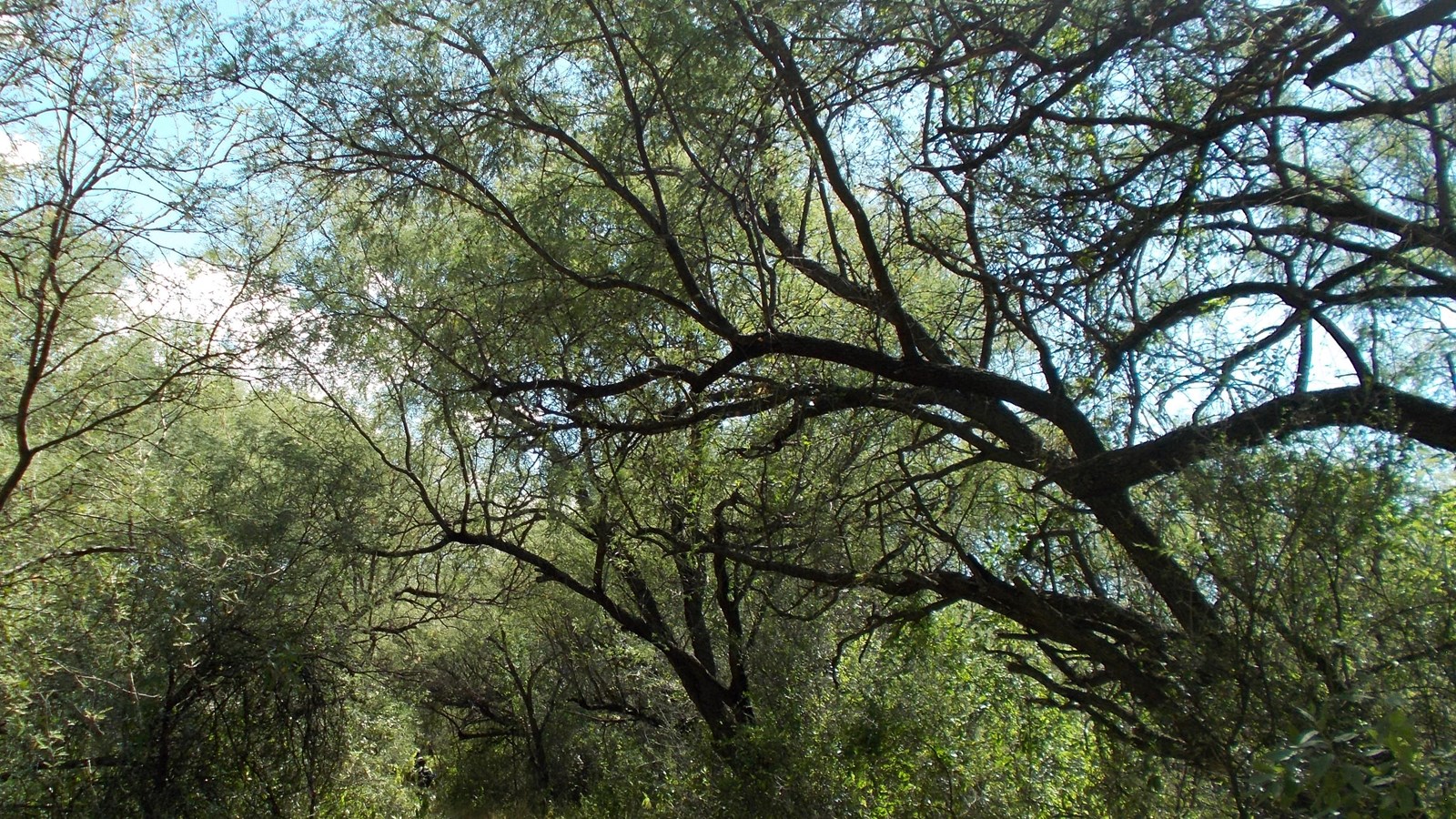Last updated: March 5, 2021
Place
Tumacácori - Mesquite Bosque

NPS Photo
Mesquite bosques (small forests) reach their greatest development near desert rivers or where their long roots can reach groundwater. This rich woodland plant community supports a tremendous biodiversity of insects, birds, and mammals. Today, the mesquite bosque of Tumacácori protects the threatened yellow-billed cuckoo and other rare species. It provided the O’odham, and later the Spanish, with wood, medicine, and food.
Mesquite flowers provide important pollen and nectar for wildlife. The flowers are crowded into long spikes called catkins. When fertilized, the flowers form long green fruits that resemble string beans. They grow and mature through the summer, turning tan or streaked with red.
The beans can be eaten at all stages of their growth. The O'odham ate them as a vegetable when green, and ground the pods into a sweet, nutty flour when ripe. They are favored by many animals, including hares, pocket mice, kangaroo rats, pack rats, and javelinas.
Although honey mesquite can be found in the region, the velvet mesquite (Prosopis velutina) dominates the landscape of Tumacácori. Some theorize that the Spanish introduction of cattle accelerated the spread of mesquite bosques in the Pimería Alta.
- Duration:
- 3 minutes, 45 seconds
How fast can nature transform an entire landscape? Pretty fast, as it turns out.
